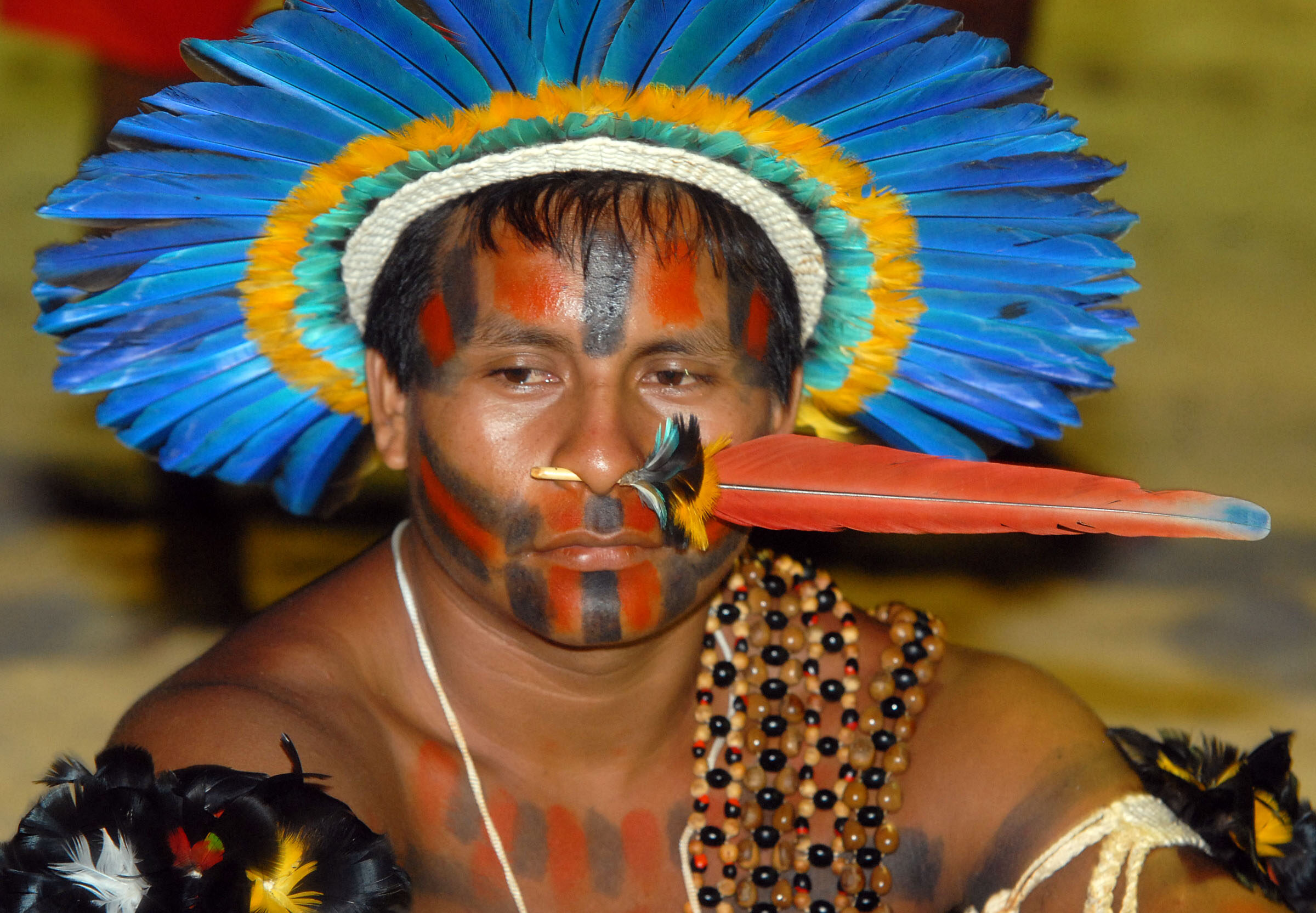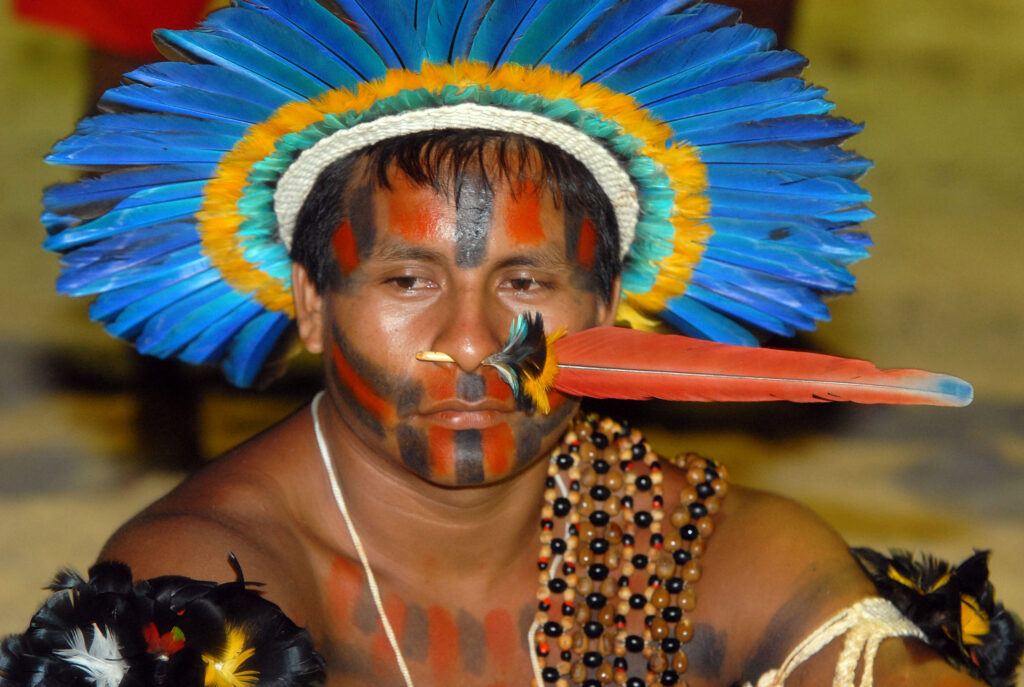This web page was produced as an assignment for an undergraduate course at Davidson College.
Strapline : The GENOMIC RECOVERY OF NATIVE AMERICANS FROM THE BRAZILIAN COAST provides intuitive understanding of their migration and departure FROM THEIR LAND.
Image from Google Images, Creative Common License Public Domain
Ancient DNA research has developed rapidly in recent years due to modern genomic techniques and continuous technological developments. In relation to the previous sentence, applications towards native populations are investigated due to there being no samples of high coverage whole genomes that belong to them .Yet, Indigenous Americans are the most recent example of human gene flow (Single et al. 2020). It is commonly believed that Native Americans diverged from East Asian populations and crossed the Beringia land bridge between16,000-25,000 years ago (Tamm et al. 2007). Nevertheless, much of Native American history is lost because they have been declared extinct since the 18th century due to European conquerors. However, the genomic field now has more resources to create opportunities that can shed light on the Native American history that we once thought would be lost forever. This can be seen in Silva et al’s , “Genomic Insight into the Origins and Dispersal of the Brazilian Coastal Natives”, where they report findings that shorten the gap in understanding the history of the population that peopled this south American settlement.
Generating genomic data on ancient DNA consists of two popular techniques: Principal Component Analysis and model-based estimation. Principal component analysis reduces the dimensionality of large data sets into a smaller one that still contains most of the information from the larger ones. The reduction of the dimensions into fewer principle components makes the note-worthy patterns amongst the data more noticeable (Alexander et al. 2009). Moreover, model-based estimation is the use of a statistical model and setting ancestry coefficients as the parameters (Alexander et al. 2009). The two algorithmic programs based off these techniques are EIGENSTRAT (Principal Component Analysis) and ADMIXTURE (model-based estimation).
An example of one of these methods being used is seen in Harris et al ‘s, “Evolutionary genomic dynamics of Peruvians before, during, and after the Inca Empire”. With the application of ADMIXTURE, significant results were revealed such as the majority of their migration to their land consisting of people from the Andes and Peru, the high frequency of Native American mitochondrial haplotypes suggests that European males were the primary source of admixture, and the low genetic diversity estimates of Native Americans predicts that there currently may be an enrichment for rare diseases in indigenous and mestizo communities.(Harris et al. 2018).
Similarly, Silva et al performed ADMIXTURE to recover the genome of the Tupí. They applied it to the last remaining representatives of the Tupí coastal branch, a small self-reported community of Tupiniquim people, a Guaraní native population from Southern Brazil and lastly three native populations from the Amazonian region. A production of 600,000 SNPs consequently allowed the researchers to retrace the origins of the Tupí. Besides the remaining representatives that claimed to be related to them, the researchers concluded that Tupí Native American ancestry cannot be applied to any other current populations living in Brazil. In addition, the combination of the recovered genome and information from natives of other regions revealed evidence of two significant migrations that explain how the Atlantic coast came to be habituated. The first one was a wave of people from northwest of the amazon and the second was a wave from Mesoamerica (Silva et al. 2020).
Next the authors executed a distribution of runs of homozygosity (ROH) which is representative of the Tupí’s population timeline. The graph consists of tracts of different lengths, where longer ones are representative of population growth through inbreeding and shorter ones (the more recent) highlight bottleneck effects due to European conquests (Silva et al. 2020). All in all, the collection of results and inferences grouped together from this study has retrieved a chunk of forgotten history. This study and the few others that have managed to recover Native American genomes must serve as trailblazers which call for an emphasis of greater attention and awareness.
Although the researchers do mention that they received ethical approval for sample collection and oral consent from the Brazilian National Ethics Commission, I believe there are more measures they could have made such as capacity building. Capacity building is providing benefits and recognition to the community members that participate directly in a researcher’s project (Wagner et al. 2020). This can be seen in manners such as co-authorship, compensation etc. It is important to demonstrate that the community they are engaging with has the upmost genuine intentions. Earning the trust of Native populations should also demonstrate that the research being conducted is not only concerned with what it can do for the public, but what it can do for them as well.
Oscar Lacayo is an undergraduate Biology major from Davidson College. Contact him at oslacayo@davidson.edu
Resources
Alexander D. H., J. Novembre, and K. Lange, 2009 Fast model-based estimation of ancestry in unrelated individuals. Genome Res 19: 1655–1664. https://doi.org/10.1101/gr.094052.109
Harris D. N., W. Song, A. C. Shetty, K. S. Levano, O. Cáceres, et al., 2018 Evolutionary genomic dynamics of Peruvians before, during, and after the Inca Empire. Proc Natl Acad Sci U S A 115: E6526–E6535. https://doi.org/10.1073/pnas.1720798115
Silva M. A. C. e, K. Nunes, R. B. Lemes, À. Mas-Sandoval, C. E. G. Amorim, et al., 2020 Genomic insight into the origins and dispersal of the Brazilian coastal natives. PNAS 117: 2372–2377. https://doi.org/10.1073/pnas.1909075117
Single R. M., D. Meyer, K. Nunes, R. S. Francisco, T. Hünemeier, et al., 2020 Demographic history and selection at HLA loci in Native Americans. PLoS One 15. https://doi.org/10.1371/journal.pone.0241282
Tamm E., T. Kivisild, M. Reidla, M. Metspalu, D. G. Smith, et al., 2007 Beringian Standstill and Spread of Native American Founders. PLoS One 2. https://doi.org/10.1371/journal.pone.0000829
Wagner J. K., C. Colwell, K. G. Claw, A. C. Stone, D. A. Bolnick, et al., 2020 Fostering Responsible Research on Ancient DNA. Am J Hum Genet 107: 183–195. https://doi.org/10.1016/j.ajhg.2020.06.017

